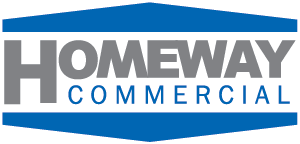The future of modular: Fully integrated design & multifamily housing
By Bob Schieler
The explosive growth of modular building practices is not only a United States occurrence, but it’s also a worldwide phenomenon. In many countries, modular is a better answer than traditional construction, especially for multifamily housing. It’s very much where the future of construction lies – and that’s because of the differentiating factors versus traditional construction.
When it comes to traditional construction and modular, volumetric construction, there are many areas of differentiation between the two. But perhaps the most telling – and important in the long run – is one industry’s ability to evolve and improve.
In traditional construction, there has been very little change in terms of process improvement over the years. But in volumetric building, process improvement is ongoing and ever evolving. One of those areas of improvement that we are continuing to see more and more of is fully integrated design.
Integrated design involves engaging the client earlier in the development of the drawings that are then used as the building blocks to create the various modules. By working closely with the client early on, you get a clearer picture of the project requirements. The result is higher precision and accuracy plus fewer changes down the line.
Staying on top of the latest trends and developments is critical to the ongoing advancements in volumetric building – especially with the ongoing need for multifamily housing.
Blair D. Hildahl (PE, LEED AP) is the Chief Business Officer, Founding Partner and Principal at Base 4, a modular architectural and engineering firm located in Georgia that is licensed and works in each state of the U.S.
“The housing crisis is not slowing down in most markets across the US, so we see the multifamily sector as one that has a tremendous amount of potential in the coming years. The strongest areas we see are the workforce, market rate apartment sector as nearly every city in America has demand for this product type,” said Hildahl.
So, what does the future of the multi-family market – and the potential for growth in modular – look like as the industry continues to evolve and grow?
“The potential for growth in the coming 10 years for the modular industry is very strong. One of the biggest benefits of modular construction is that it opens the industry doors to a labor pool that would not normally consider a career in construction,” explained Hildahl.
“The outlook for the multifamily market in the US is optimistic, as there is an ongoing demand for rental properties due to demographic trends, economic growth, and lifestyle changes,” said Hildahl.
At Homeway, throughout our history as a volumetric manufacturer, we have always worked hard to stay on the cutting edge of the industry and the latest trends. And that’s something that shows in the projects we’ve completed since 2005.
More Industry News

 Now Hiring
Now Hiring